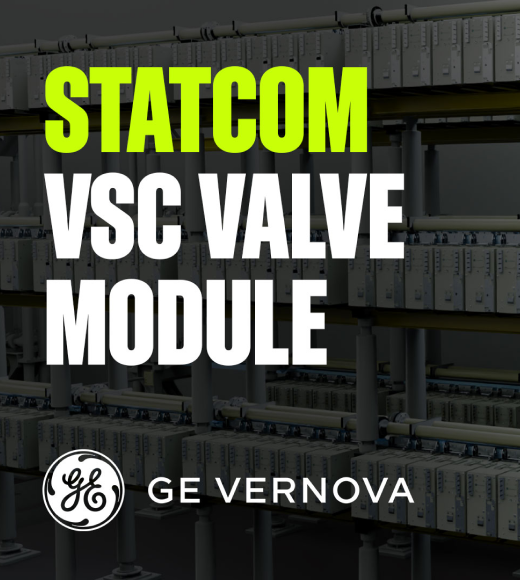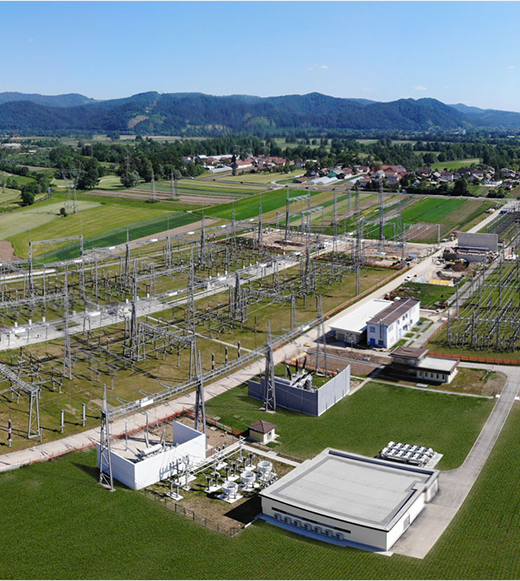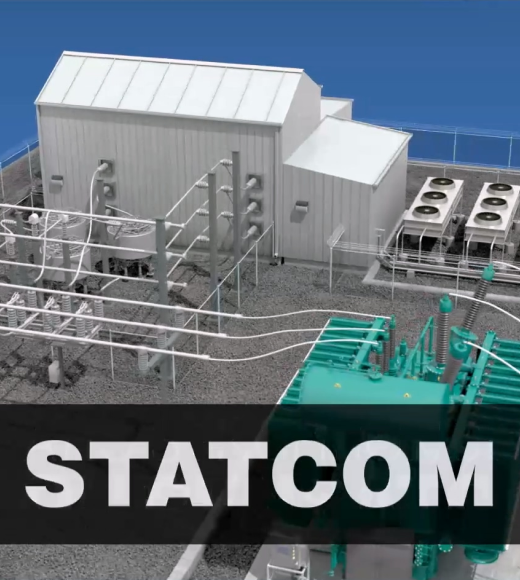Grid stability and voltage control for evolving demand
Building on GE Vernova’s legacy of more than 130 years in power electronics including SVCs, STATCOMs, HVDC, and more, our newest FACTSFLEX STATCOM portfolio provides rapid, real-time active and reactive power support, enabling voltage and frequency stability even in the most demanding conditions.
FORMING FUTURE GRIDS WITH FLEXIBILITY
As renewable energy and AI-driven data centers reshape the power landscape, grids are facing declining inertia, faster load swings, and more frequent voltage disturbances. Traditional systems weren’t designed for this level of variability.
While conventional SVC and synchronous condensers have wide use in electrical grids today, the FACTSFLEX portfolio offers a superior solution with a faster response, greater scalability, and a smaller footprint – capabilities that traditional technologies simply can’t match in today’s dynamic grid environment.

Rapid Inertia Change
Delivers fast responding virtual inertia to stabilize modern grids

Fault Response
Reacts in milliseconds with adaptive reactive power support for superior fault ride-through

Transmission Flexibility
Support evolving grid plans and simplify transmission expansion

Lower Operating Costs
Reduce O&M costs with scalable systems.
Flexible Configurations
FACTSFLEX Static Synchronous Compensator (STATCOM) solution is a shunt-connected customized system installed on AC transmission networks. It is based on Modular Multilevel Converter (MMC) technology where current is injected or absorbed to regulate the voltage, frequency, and other grid variables. When energy storage is installed, active power is generated/absorbed to improve stability in different grid disturbances. FACTSFLEX can operate either as current source (grid-following) or voltage source (grid-forming).
FACTSFLEX Classic
<p>GE Vernova's traditional grid-following STATCOM is a well-established technology. <strong>FACTS</strong><span class="everGreen-text"><strong>FLEX</strong></span> Classic provides reactive power compensation and voltage control with a faster response time and a smaller footprint than traditional SVC solutions.</p><p><strong>Features include:</strong> Active harmonic filtering, reactive power control, dynamic voltage regulation, negative sequence voltage control, black start support, automatic performance optimization, stability monitoring, POD, and intelligent transient support.</p>
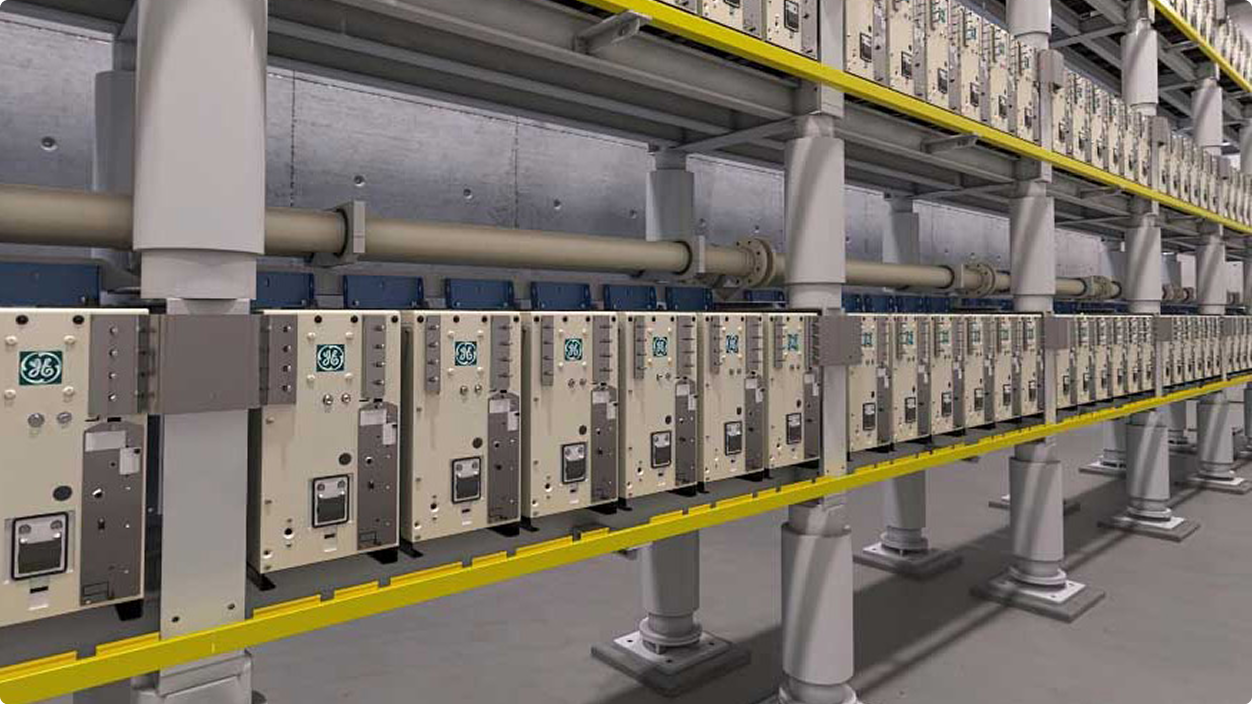
FACTSFLEX GFM
<p>GE Vernova's grid-forming STATCOM provides instantaneous natural reactive power injection for grid disturbances. Grid-forming control drives improved damping characteristics and provides a cost-efficient and powerful grid stabilizing solution.</p><p><strong>Features include: </strong>All Classic features plus: improved weak grid operation, inherent reactive power response to network disturbances and improved low voltage ride-through.</p>
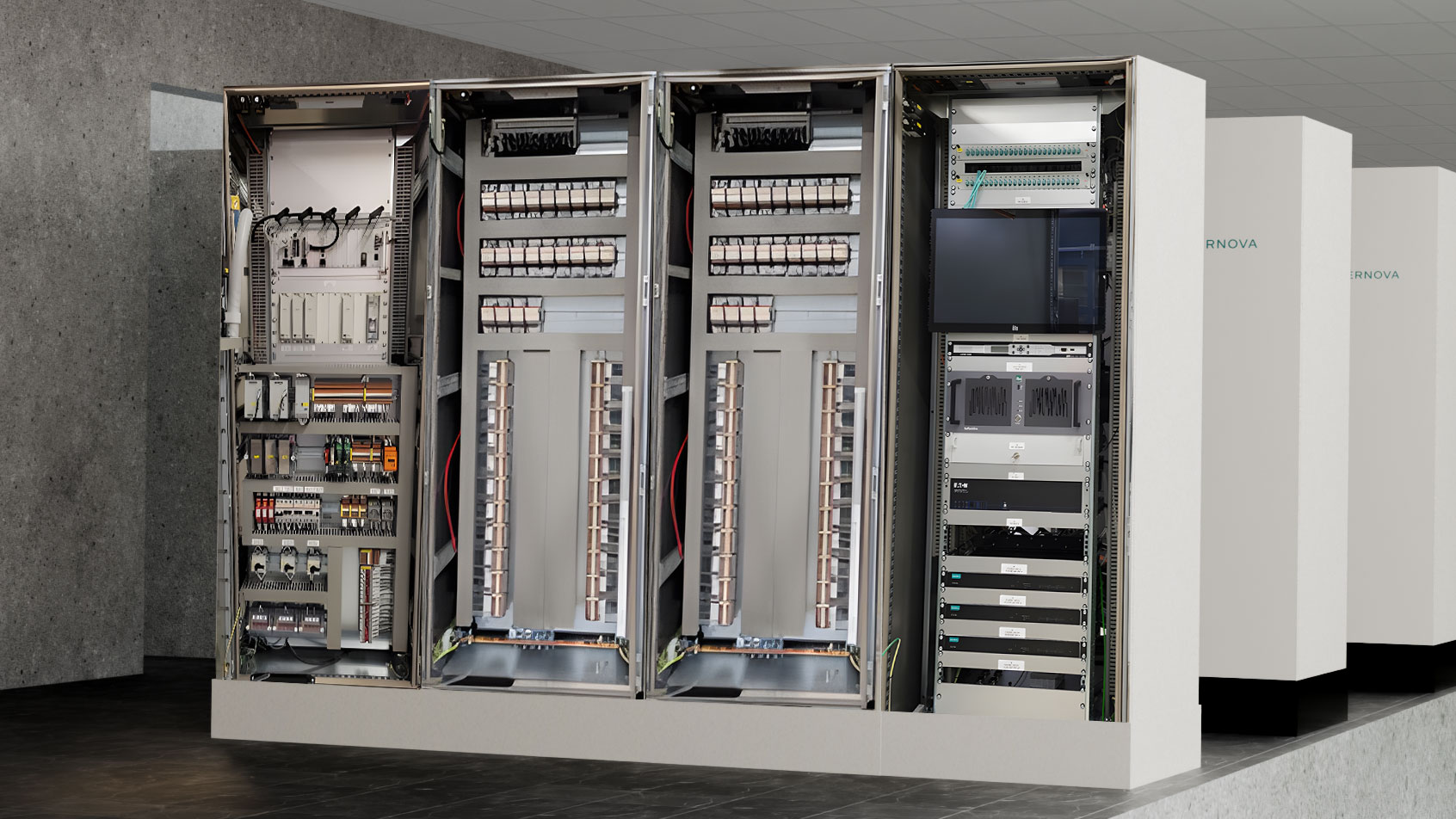
FACTSFLEX GFMe
<p>The <strong>FACTS</strong><span class="everGreen-text"><strong>FLEX</strong></span> GFMe is a comprehensive, grid-forming, double-star configured STATCOM with integrated energy storage that stabilizes the grid voltage and frequency during grid disturbances using active and reactive power.</p><p><strong>Features include:</strong> All GFM features plus: synthetic inertia to limit RoCoF and nadir, fast frequency response, active phase jump power, short circuit contribution, improved POD operation and load smoothing.</p>
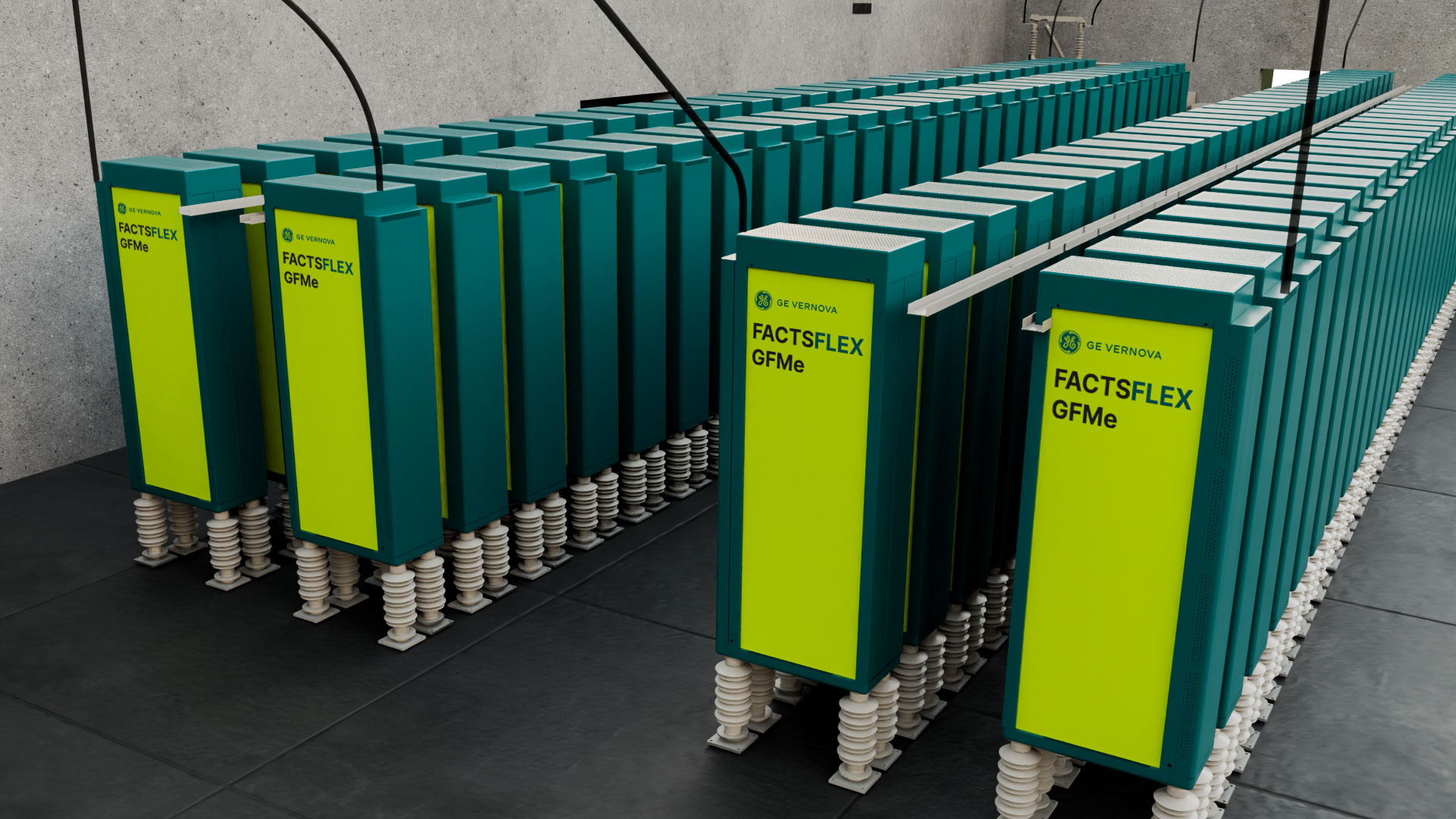
FACTSFLEX Solution

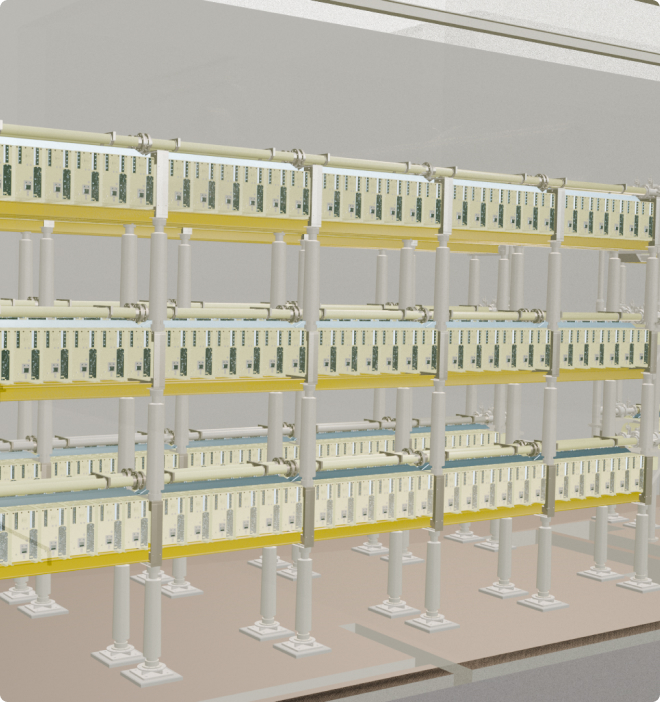
Modular Multilevel Converter (MMC)
The FACTSFLEX MMC valve rapidly and effectively responds to grid events to maintain the system stability. A modular open-rack structure, where the valve is located inside a building making any required maintenance significantly easier than containerized solutions. Redundant valve submodules ensure the specified availability, so if an error is detected, a submodule is shorted by an ultrafast, re-usable, bypass switch without interrupting the system operation.
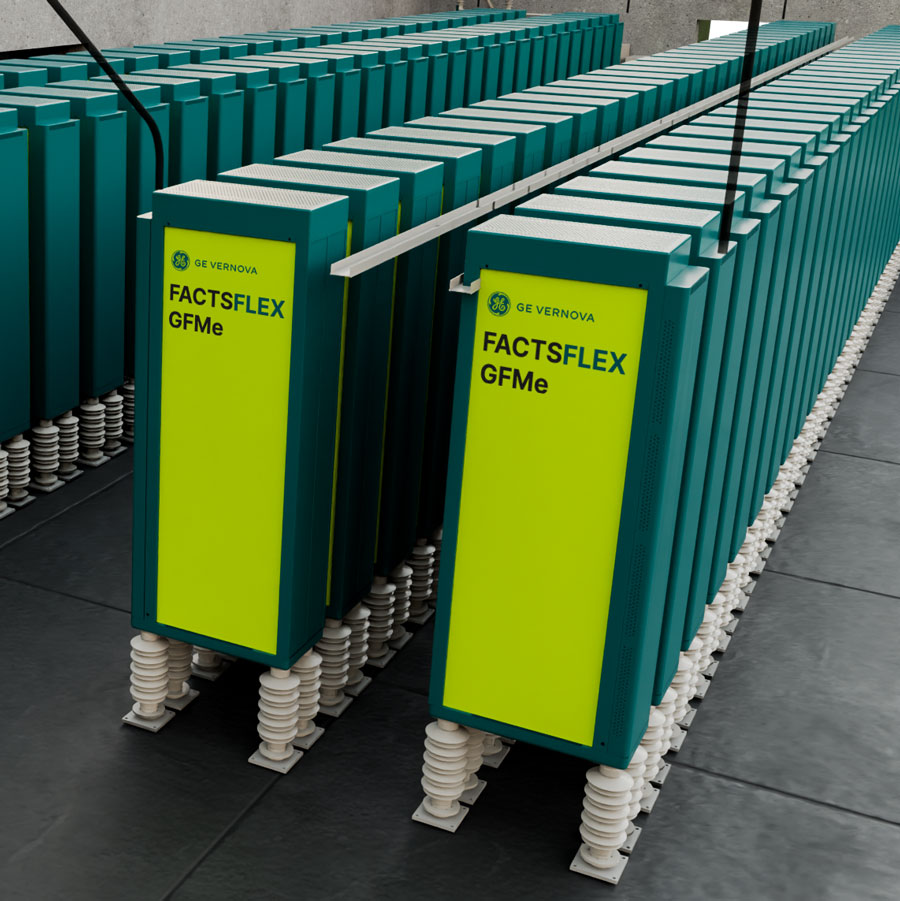
Energy Storage
The supercapacitor energy storage is integrated into the FACTSFLEX GFMe for enhanced capabilities, operation, reliability, and availability. Energy storage strings can be divided into separate halls, allowing for maintenance while remaining in operation. Double-star configuration enables high-voltage energy storage integration, lower losses, and longer lifetime.
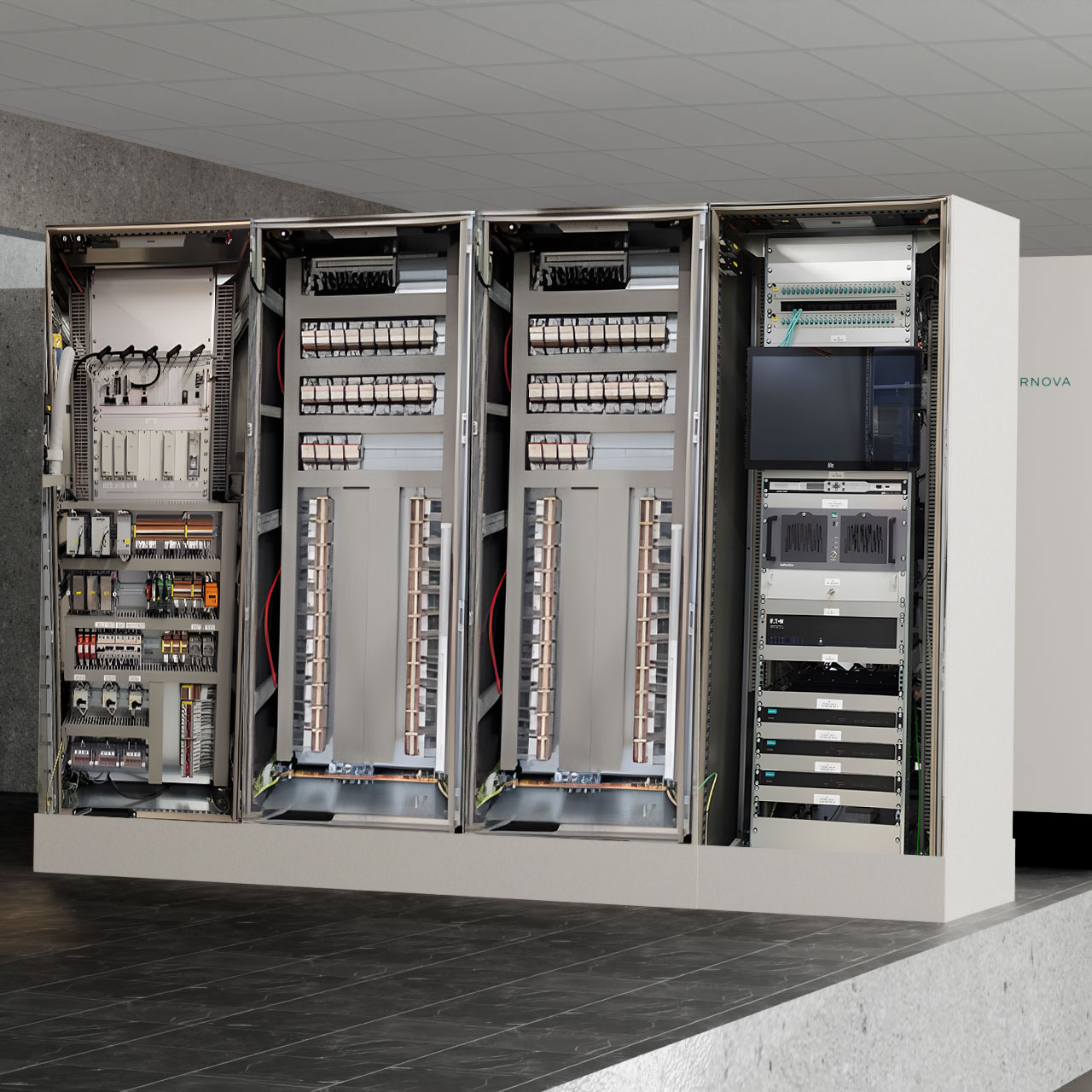
Advanced Digital Control (ADC) System
GE Vernova’s Advanced Digital Control (ADC) System and model-based design approach provide enhanced capabilities to design, simulate, test, and operate STATCOMs with smart controls and fast response time.
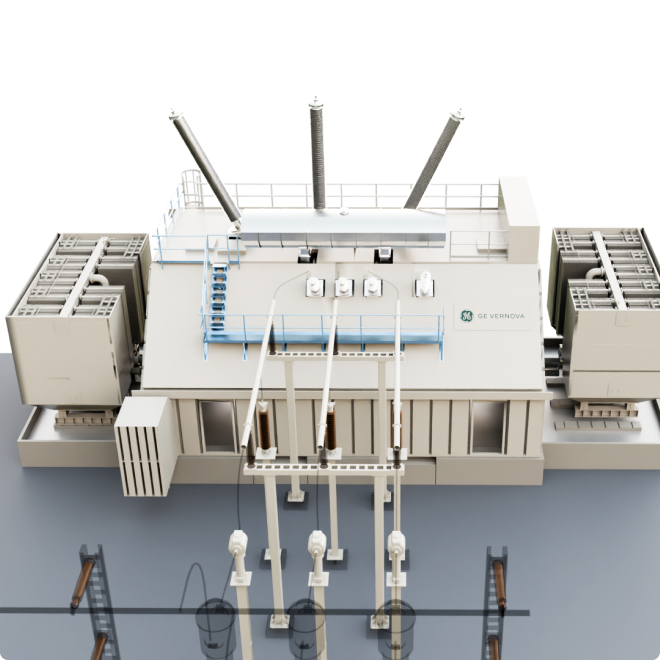
Step-Down Transformer
FACTSFLEX power transformers are customized with a flexible design of single- or three-phase units to handle a wide voltage variation and match the MMC voltage to the transmission system voltage.
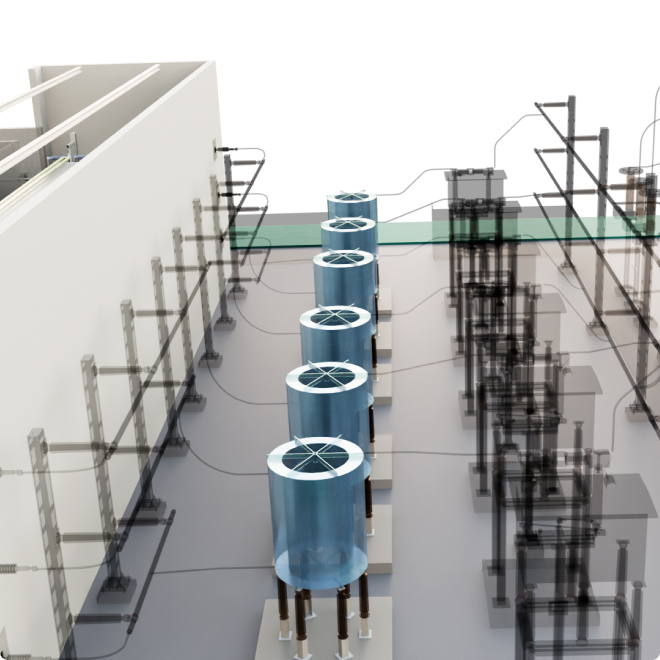
Valve Phase Reactor
FACTSFLEX phase reactors are connected between the grid and the FACTSFLEX valve, enabling active and reactive power generation or absorption for improved performance with a minimized footprint.
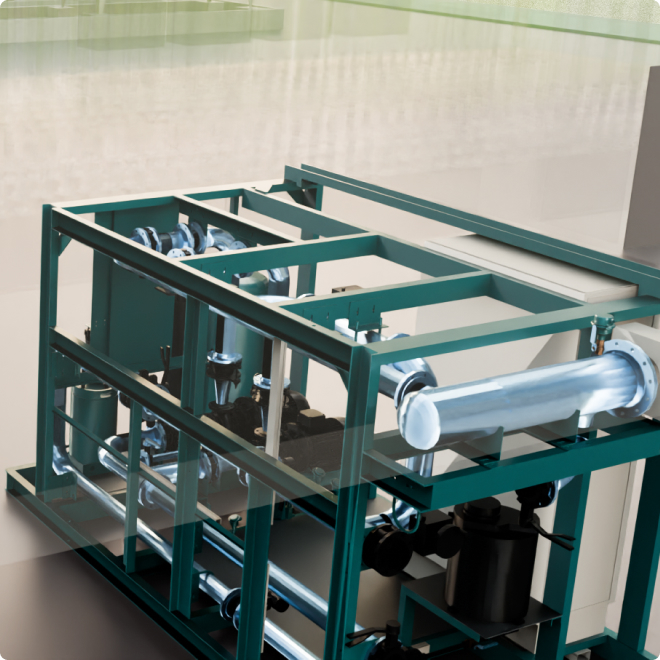
Cooling System
The cooling system ensures smooth operation and long lifetime of the valves. It consists of a main water circuit with dual circulation pumps, a water treatment circuit with a deionizer, and expansion vessels. Variables are monitored to ensure thermal stability and energy efficiency.
Learn more about FACTSFLEX STATCOM
A STATCOM provides advanced reactive power support using solid-state electronics rather than rotating machinery, offering key advantages for today’s evolving power systems. It enhances grid stability with a faster dynamic response and seamless adaptability, especially in regions with high renewable energy integration. STATCOMs based on modular multilevel converter (MMC) technology enable precise voltage regulation and are easier to scale during grid expansion.
Unlike a synchronous condenser, whose performance characteristics are largely fixed by its physical design, a STATCOM is a software-driven device. This provides a level of customization and adaptability that is simply not possible with mechanical systems.
Tailored to Specific Needs: A STATCOM's advanced digital control system can be precisely programmed and fine-tuned to meet the unique requirements of any application. Whether the goal is damping power oscillations, providing active harmonic filtering, or balancing asymmetrical loads, the control algorithms can be customized for optimal performance in that specific scenario.
Adaptable to Evolving Network Conditions: As the grid changes over time—with more renewable generation added or different industrial loads connected—a STATCOM's operational parameters can be updated through software. This allows it to adapt to a wide range of grid conditions without requiring costly physical modifications, ensuring its effectiveness for years to come.
A STATCOM (Static Synchronous Compensator) provides fast, accurate reactive power support to help maintain voltage levels and ensure grid stability, particularly in networks with high renewable energy integration. Typical range is 100-300 Mvar, however the range can be extended as needed.
Grid operators in both North America and Europe require interconnection resources to operate within a power factor range of 0.95 leading to 0.95 lagging at the point of interconnection. These standards ensure that generating resources contribute effectively to voltage control and reactive power management across the transmission system.
GE Vernova’s FACTSFLEX STATCOM is specifically engineered to meet or exceed these requirements. With ±300 Mvar capability and built on modular multilevel converter (MMC) technology, FACTSFLEX delivers precise voltage regulation. It also supports grid-forming capabilities, and with integrated energy storage, can provide active power support and virtual inertia, making it a resilient and future-ready solution for modern grid demands.
A STATCOM (Static Synchronous Compensator) is engineered to provide extremely fast reactive power support, FACTSFLEX Classic, GFM and GFMe have a typical response time in milliseconds. This rapid response is essential for maintaining grid stability during voltage disturbances, load fluctuations, or events caused by high renewable energy integration.
Both North American ISOs and European TSOs mandate stringent response time requirements to ensure grid-connected devices can quickly stabilize voltage and support system reliability. STATCOMs built with modular multilevel converter (MMC) technology meet these requirements by delivering continuous and controllable reactive power within milliseconds.
When combined with energy storage, modern STATCOM systems like FACTSFLEX GFMe can also provide active power support, contributing virtual inertia and enabling grid-forming capabilities. These features make STATCOMs highly effective for today’s dynamic power systems, ensuring compliance with regional standards while supporting the transition to cleaner, more flexible grids.
GE Vernova’s FACTSFLEX portfolio meets these response time expectations for both North American and European grid codes, ensuring fast and reliable grid support across global applications
A STATCOM (Static Synchronous Compensator) plays a crucial role in fault ride-through (FRT) performance by maintaining reactive power support during short-circuit or voltage sag events, helping preserve grid stability. Both North American and European grid codes require that connected systems remain operational and provide dynamic voltage support during and after grid faults, rather than disconnecting.
These requirements are particularly important for networks with high renewable energy integration, where system inertia is reduced and fast recovery is critical. STATCOMs built with modular multilevel converter (MMC) technology excel in these scenarios, responding within milliseconds to inject or absorb reactive power and support voltage recovery.
Modern STATCOMs, especially when integrated with energy storage, can also provide limited active power support and contribute virtual inertia, enhancing their grid-forming capabilities and fault resilience.
GE Vernova’s FACTSFLEX STATCOM is fully compliant with North American and European fault ride-through standards, ensuring continuous, stable operation during grid disturbances.
A STATCOM (Static Synchronous Compensator) contributes to grid stability not only through reactive power support, but also by reducing harmonic distortion that can interfere with power quality and equipment performance. Grid codes typically set strict limits on harmonic emissions notably in North America and Europe, requiring advanced filtering to ensure compliance and reliable operation—especially as renewable energy integration grows and the grid becomes more sensitive to power quality issues.
STATCOMs built with modular multilevel converter (MMC) technology inherently produce lower harmonics and can be equipped with additional filtering features to meet regional harmonic standards. This improves system efficiency and supports smooth integration with other grid assets.
GE Vernova’s FACTSFLEX STATCOM is designed to meet harmonic distortion requirements across both North American and European grids, ensuring clean power delivery while supporting advanced functions like virtual inertia, grid-forming capabilities, and active power support when combined with energy storage.
As more wind and solar generation comes online, utilities face increasingly variable and less predictable power flows. These fluctuations can result in rapid changes to system frequency—known as Rate of Change of Frequency (ROCOF)—posing significant challenges to grid stability, especially in low-inertia networks.
GE Vernova’s FACTSFLEX> STATCOM with Grid-Forming with Energy Storage (GFMe) provides an advanced solution. Unlike traditional grid-following devices, GFMe-equipped STATCOMs actively shape and stabilize the grid by delivering fast, programmable virtual inertia and fast frequency response. This enables utilities to manage ROCOF more effectively, support renewable energy integration, and maintain voltage and frequency stability in real-time.
With flexible architecture and modular scalability, FACTSFLEX STATCOM can adapt to a wide range of grid conditions and deployment needs—making it ideal for high-renewable regions and modern grids facing rapid change.
AI data centers introduce highly dynamic, high-density electrical loads that fluctuate rapidly during training and inference cycles. These sharp, millisecond-scale changes in power demand can cause significant voltage sags, transients, and instability, especially when multiple high-power GPU racks operate simultaneously.
Traditional voltage regulation tools like SVCs and synchronous condensers cannot react quickly enough to stabilize voltage under these conditions.
A STATCOM with Grid-Forming and Energy Storage capabilities (GFMe) offers the speed and precision needed to address these challenges. Balancing the huge load swings of AI data center with the capability to inject and absorb significant amount of active power, the FACTSFLEX GFMe will smoothen the power draw seen by micro- or power grids. In addition, it delivers fast reactive power support, virtual inertia, and waveform control, ensuring voltage remains stable even during rapid load changes or weak grid events. Its modular, scalable design also allows for localized deployment near data centers, making it ideal for fast-growing AI infrastructure.

Challenge
Grid resilience and seamless exchange of electricity between Saudi Arabia and Egypt at a HVDC interconnection substation.

Solution:
FACTSFLEX Classic (Hybrid) STATCOM turnkey solution (included system studies, Hybrid STATCOM equipment, design, manufacture, construct, install, test, commissioning)

Benefit:
Improved system reliability and transfer capability across HVDC corridor
Customer Story
Renewable Integration – Onshore Wind

Challenge
A new wind farm in North America needed improved voltage support.

Solution:
FACTSFLEX Classic STATCOM turnkey solution including design, engineering, supply, construction, erection, installation, mechanical completion, testing and commissioning

Benefit:
Added voltage stability and supporting the system during contingency events
Customer Story
Renewable Integration – Offshore Wind

Challenge
A new offshore wind farm in Asia required voltage support for grid integration and compliance.

Solution:
FACTSFLEX Classic STATCOM turnkey solution including system studies, equipment design, manufacture, test, commissioning

Benefit:
Facilitate the offshore wind farm grid connection and other local renewable power generation and enhancing the overall grid stability
Customer Story
Transmission Network Strengthening

Challenge
A European utility had increased the percentage of renewables making the grid vulnerable to any disturbances and even faced a recent blackout prior to STATCOM commissioning. STATCOM is used for voltage management to stabilize the network.

Solution:
FACTSFLEX Classic STATCOM turnkey solution turnkey solution including design, engineering, supply, erection, installation, mechanical completion, testing and commissioning

Benefit:
Voltage management to stabilize the network
Customer Story
Transmission Network Strengthening

Challenge
A European utility was experiencing relatively large voltage oscillations in the current transmission system and anticipated future challenges with new power generation integration.

Solution:
FACTSFLEX Classic STATCOM turnkey solution - including system studies, STATCOM equipment, design, manufacture, construction, installation, testing, and commissioning

Benefit:
Improved voltage stability and flexibility for future grid expansion
Customer Story
Renewable Integration – Offshore Wind

Challenge
A new offshore wind farm in Europe faced grid code compliance issues due to weak system strength.

Solution:
FACTSFLEX Classic (Hybrid) STATCOM turnkey solution - including system studies, STATCOM equipment, design, manufacture, construction, installation, testing, and commissioning

Benefit:
Enable reliable grid connection and stabilize the grid
Customer Story
Transmission Network Strengthening

Challenge
A European utility needed strengthening in the current transmission system and post fault conditions management of the network.

Solution:
FACTSFLEX Classic Hybrid STATCOM full turnkey solution - including system studies, Hybrid STATCOM equipment, design, manufacture, construction, installation, testing, and commissioning

Benefit:
Improved grid resilience and support for HVDC connection
Customer Story
Rail and Transport Electrification

Challenge
Getlink, the operator of the Channel Tunnel, was looking to increase rail capacity while ensuring stable power supply to all rail traffic. The existing SVC system was not optimal and caused reliability problems at peak times.

Solution:
FACTSFLEX Classic (Hybrid) STATCOM turnkey solution - including system studies, STATCOM equipment, design, manufacture, construction, installation, testing, and commissioning. The solution is largest STATCOM load balancer in the world.

Benefit:
Increased rail traffic and stable power - the power system now enables 16 trains simultaneously in the tunnel, and up to 1,000 trains every 24-hour period

1/0





